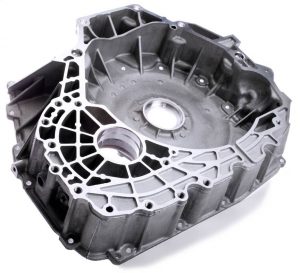Making Strong Alloy Bonded Products with the Aid of Aluminum Diecastings
The manufacturing process wherein smelted steel is injected, under substantial tension, into a hardened aluminum die or shape is recognized as die casting technique. Diecastings are often cooled in the water. It is then opened, and the casting elements are removed; often times there are hundreds of die casting parts each day and sometimes only a few hundred of them. Once the die cast tooling is paid for, parts are an extremely economical aluminum part manufacturing procedure.
There are in fact 3 usual processes under this solution, particularly:
a) High pressure die casting - quite possibly the most widely used, representing about 50 % of the total portion of all light alloys casting development.
b) Low pressure die casting - presently accounts for about 1/4 of manufacturing and its usage is increasing.
c) Gravity die casting - makes up for the remainder, except for a small but growing share from the recently introduced vacuum die casting and squeeze casting procedure.
Die casting alloys are typically non-ferrous and there is a a great deal offered with a wide range of physical and mechanical components covering nearly every possible application a designer might require. Low melting level alloys are cast in hot chamber machines. Advanced and increased melting point metals are cast in cold chamber machines. The enhancing volume of programs and of products is the most effective proof of the success of aluminum alloys foundry, which is most likely one of the most powerful fields of production and engineering. The famous benefits associated to the use of aluminum alloys, such as good mechanical habits, good corrosion resistance, lightweight, etc., constitute the driving force for the introduction of new programs and concepts and for the advancement of new processing methods. Different processes are now contending to attain both financially and technically beneficial production of aluminum metals castings.
Aluminum castings are used for many industrial applications, for instance in the automotive market, applications includes cylinder blocks and heads, wheels, brake tanks, suspension arms, and pistons. The substitution of aluminum cast components for ferrous castings in the automotive sector is predicted to remain to grow as automakers remain to look for opportunities to minimize car weight. The auto production usage of aluminum alloy die casting remains to challenge lots of metal creators and manufacturing engineers, as greater focus is placed on item quality and manufacturing expense. Currently, one of the major limitations to a wide use of aluminum metals for automotive applications is a lack of complete expertise in their thermal behavior and of the relationships to micro-structural characteristics.
About half of all diecastings globally made of aluminum metals are used for a wide range of automotive pieces and other consumer products. The device part layout affects the micro-structure of the metal, conditioning the cooling amount for the period of solidification and might have important results on the component efficiencies.
There are in fact 3 usual processes under this solution, particularly:
a) High pressure die casting - quite possibly the most widely used, representing about 50 % of the total portion of all light alloys casting development.
b) Low pressure die casting - presently accounts for about 1/4 of manufacturing and its usage is increasing.
c) Gravity die casting - makes up for the remainder, except for a small but growing share from the recently introduced vacuum die casting and squeeze casting procedure.
Die casting alloys are typically non-ferrous and there is a a great deal offered with a wide range of physical and mechanical components covering nearly every possible application a designer might require. Low melting level alloys are cast in hot chamber machines. Advanced and increased melting point metals are cast in cold chamber machines. The enhancing volume of programs and of products is the most effective proof of the success of aluminum alloys foundry, which is most likely one of the most powerful fields of production and engineering. The famous benefits associated to the use of aluminum alloys, such as good mechanical habits, good corrosion resistance, lightweight, etc., constitute the driving force for the introduction of new programs and concepts and for the advancement of new processing methods. Different processes are now contending to attain both financially and technically beneficial production of aluminum metals castings.
Aluminum castings are used for many industrial applications, for instance in the automotive market, applications includes cylinder blocks and heads, wheels, brake tanks, suspension arms, and pistons. The substitution of aluminum cast components for ferrous castings in the automotive sector is predicted to remain to grow as automakers remain to look for opportunities to minimize car weight. The auto production usage of aluminum alloy die casting remains to challenge lots of metal creators and manufacturing engineers, as greater focus is placed on item quality and manufacturing expense. Currently, one of the major limitations to a wide use of aluminum metals for automotive applications is a lack of complete expertise in their thermal behavior and of the relationships to micro-structural characteristics.
About half of all diecastings globally made of aluminum metals are used for a wide range of automotive pieces and other consumer products. The device part layout affects the micro-structure of the metal, conditioning the cooling amount for the period of solidification and might have important results on the component efficiencies.

Comments
Post a Comment